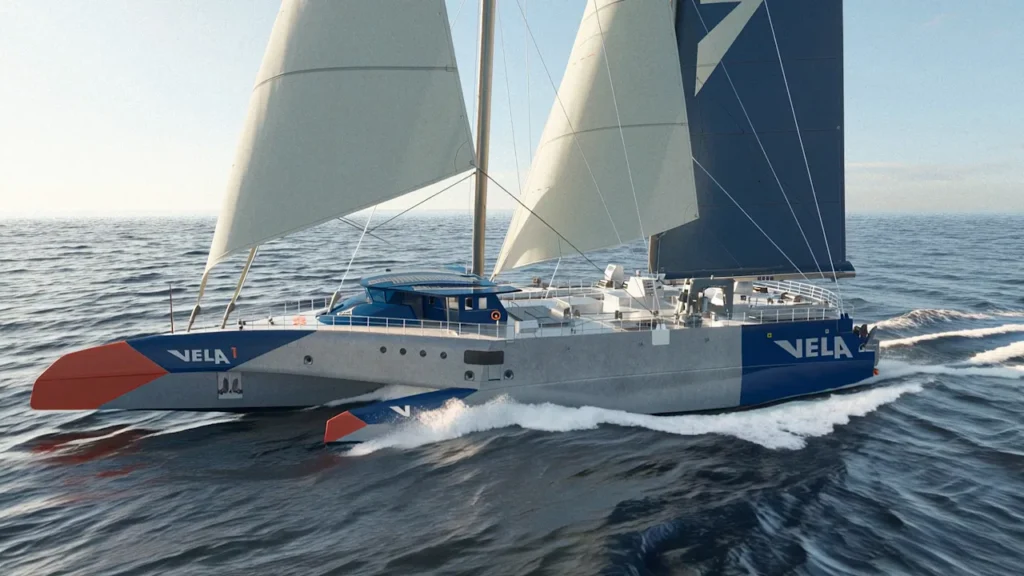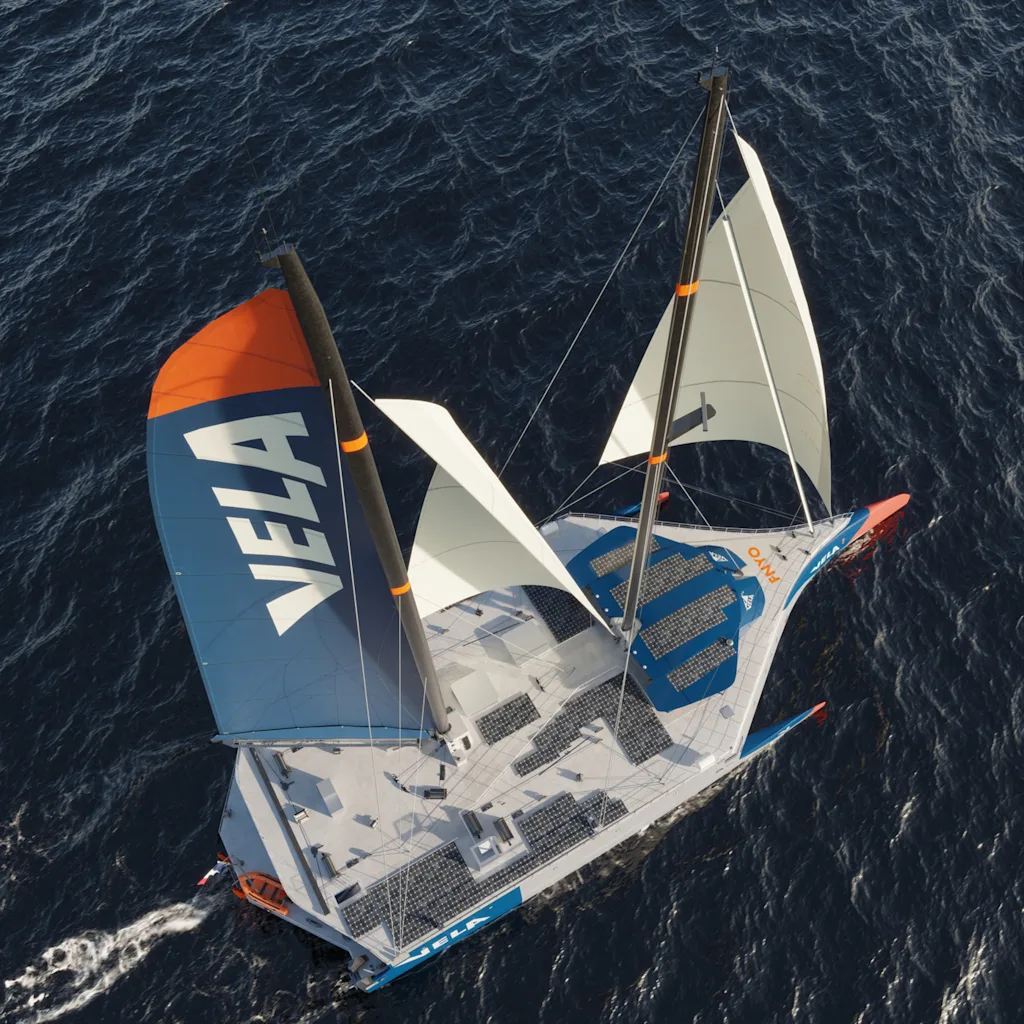
It looks more like a racing yacht than a cargo ship. But this new 100% wind-powered vessel will soon begin bringing goods from Europe to the U.S.—and could make deliveries faster than conventional cargo ships.
Vela, a French startup, pulled technology from the racing world to make the vessel run as fast as possible. It’s a trimaran, meaning it has three hulls, which helps it cut through water efficiently. The wide, stable shape allows it to carry large sails. As in racing yachts, the mast is made from carbon fiber, and the sails are made of high-performance fabric designed for strength. The ship also uses navigation tech developed for racing to help route toward ideal wind conditions as it crosses the Atlantic.
“We’re using the exact same tools to navigate our vessel,” says Vela cofounder Michael Fernandez-Ferri.

All of this “isn’t just a fancy gimmick,” he says. “It’s really about bringing speed in operations, because speed is of the utmost importance.” Vela is one of a small but growing number of startups working to make wind-powered cargo ships feasible. A wind-powered cargo ship from French company TOWT (TransOceanic Wind Transport) made its first cross-Atlantic delivery last fall, and a hybrid wind-diesel ship just made its first crossing in October.
A workaround for bottlenecks at port
Vela designed the ship to tackle one part of the global supply chain: companies making high-end goods, such as luxury cosmetics or pharmaceuticals, that are trying to find a way to decarbonize transportation.
For these companies, air freight can be one of the largest parts of their carbon footprint. Shifting to sea transportation—even a regular, diesel-powered cargo ship—would help, but that hasn’t been an option because most cargo ships are unreliable.
Typical cargo ships have long delays at ports. “Traditional container shipping has been evolving for bigger and bigger ships, to the extent that these ships are so big that they can only go to a few main harbors,” Fernandez-Ferri says. “This is the bottleneck now of the shipping industry.”
The new sailing cargo vessel is much smaller than a container ship—around 220 feet long, versus as much as 1,300 feet for an ultra-large container ship. It carries only 600 European pallets, compared to hundreds of thousands on a large ship. But the small size means it can access less-crowded terminals at ports, avoiding long lines. It’s also much faster to load and unload than a container ship, which can take as long as a week to unload, depending on its size.
The racing-inspired design helps Vela’s vessel cross the ocean at speeds similar to a standard ship. (Depending on the time of year, crossing from Europe to the U.S. could take 10 to 13 days, according to modeling based on wind patterns from the past decade; a regular cargo ship might take 9 or 10 days.) Because it saves time at ports and the total delivery time is shorter, it’s more reliable for customers. For freight—which can run as much as $1 million in commercial value for a single pallet—it’s also safer, since cargo stays inside the ship until it’s transferred to secure storage.
Deliveries from the U.S. back to France will also be possible on the ship. Right now, large container ships have to travel in a large loop through the Northern Atlantic, taking as long as two months to reach France—too long to be viable for many customers. Vela can make it to France in 12 days. The cost is less than air freight, and similar in cost to “less than container load” shipments by sea, or cargo that shares space in a shipping container rather than filling the whole box.
A system to cut emissions by 99%
On board, the ship is plastered in more than 2,500 square feet of solar panels that feed a battery. Two hydro generators also create electricity as the ship moves through the water. This helps power refrigeration for cargo like pharmaceuticals, along with other electricity used on the ship. The ship’s propulsion runs almost entirely on wind, except for navigation inside ports. The system cuts emissions by 99% compared to air freight and 90% compared to container ships.
It’s also better for marine life because it doesn’t create noise as it sails. (The noise from cargo ships makes it hard for whales and other animals to communicate, and can even cause permanent hearing damage.) It doesn’t pollute water with ballast water or fuel, either. The body of the ship is made from aluminum—lighter than a typical steel cargo ship, and easier to recycle at the end of a ship’s life.

The company’s first ship is currently under construction in the Philippines, at a shipyard that specializes in three-hulled aluminum vessels. Next spring, it will begin the trip to France. A year from now, if all goes as planned, it will begin making its first deliveries for companies like Takeda Pharmaceuticals, medical device provider Echosens, and cosmetics company Greentech, among others.
Vela raised 40 million euros (roughly $43 million) in a Series A round of funding in 2024, and after the first commercial journey, plans to raise more money to build another four vessels. With a fleet of five ships, it can make departures roughly once a week, enough to meet the needs of its customers. Later, it plans to license the tech to partners to build more routes in other parts of the world.
Fernandez-Ferri says, “We see a future with a network of local players leveraging our technology to bring sailing transportation to its full potential.”
